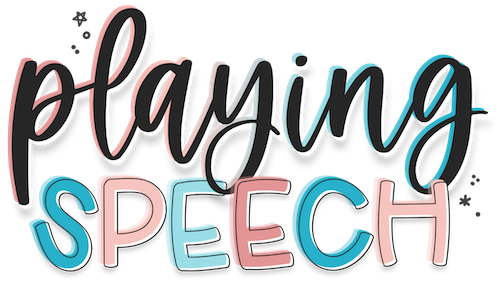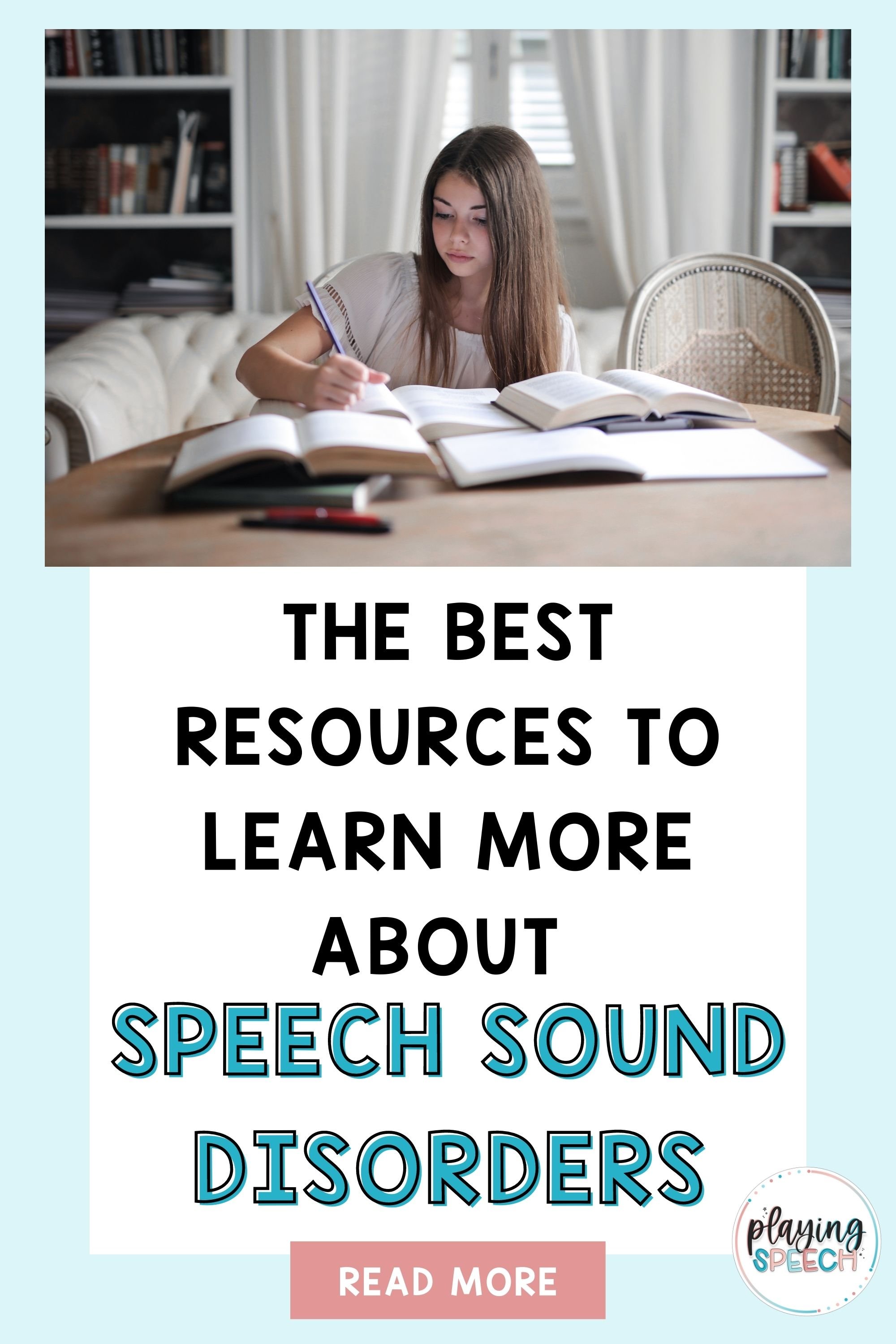My Go-To Resources to Learn About Speech Sound Disorders
The Best Resources to Learn More About Speech Sound Disorders
Over the years, I have taught myself a lot about speech sound disorders and the various approaches you can use to treat them. And more recently, I find that people have been asking me where they can go to learn more about a specific approach to treating speech sound disorders. So I decided to write a blog post and put all of my recommendations in one place! I will discuss childhood apraxia of speech, the complexity approach, minimal pairs, multiple oppositions, maximal oppositions, and the cycles approach.
Disclaimer: I do not receive any compensation if you purchase any of the courses or products mentioned here other than the ones I have personally created. I will put a note after a product that I have created so you are aware of my financial disclosure.
The Comprehensive Text Book
The first thing I will recommend is getting this text book here called Interventions for Speech Sound Disorders In Children. It has a breakdown of 21 different interventions for speech sound disorders - including the Cycles Approach, Minimal Pairs, Complexity Approach, and more! It is where I always start my education. I read the chapter related to the intervention, and then I go in search of more information. However, I find that often times, this book is sufficient to get started with any intervention.
The Comprehensive Website
This website, run by Caroline Bowen, is a wealth of information for all things speech sound disorders. She covers minimal pairs, complexity theory, and consideration of low neighborhood density for target selection. There are also Power Point presentations available that outline the assessment of, and evidenced based interventions for, speech sound disorders. She has word lists and pictures available for minimal pairs and complex clusters. I think the navigation is a little clunky, but there is so much useful information on the site if you go digging. Try starting on this page here.
Childhood Apraxia of Speech
There are so many great resources out there to learn more about Childhood Apraxia of Speech.
The first one I have to recommend is the FREE online course from Dr. Edythe Strand called Diagnosis and Treatment of CAS using Dynamic Temporal and Tactile Cueing. You can get 4.5 hours of continuing education after you watch it! You can find it here. The course description states:
“The online video course covers the fundamentals of assessment and treatment of childhood apraxia of speech (CAS), including Principles of Motor Learning (PML). The course provides foundational knowledge related to CAS, including how CAS differs from other motor speech disorders and more common developmental phonological disorders. Effective methods to differentially diagnose CAS and develop a plan of treatment that follows principles of motor learning is also covered. The course includes video examples of treatment using the Dynamic Temporal and Tactile Cueing (DTTC) method developed by Dr. Strand. The presentation includes research to guide evidence-based practice. Treatment for different age groups and different levels of severity of CAS is discussed.”
Another good free course is available on apraxia-kids.org. It is called Principles of Motor Learning and Childhood Apraxia of Speech by Edwin Maas, the principles of motor learning guru! Watch it here. Although the title mentions that it is geared toward children with apraxia, I believe having a working knowledge of principles of motor learning can benefit your entire speech sound disorder caseload because speech is motor!
I also recommend this paid course here called Treatment of Childhood Apraxia of Speech: A Practical Guide from Alonna Bondar at Bondar Speech. It is a super comprehensive, all-in-one course about childhood apraxia of speech that takes you from assessment and diagnosis through treatment and carryover. Alonna included over 40 therapy videos to show you how to actually do therapy with a child with apraxia. It’s incredible!
Complexity Approach
The Complexity Approach is very interesting in that it is not one specific treatment protocol. Rather it is a methodology of target selection that looks at working on the more complex sounds first in order to affect greater system-wide change in the overall phonological system of a child.
I have found the website SLPath.com to be a WEALTH of information regarding the complexity approach. You will need to create a free account to access all of the resources. But it is totally worth it!
I also found some very good short webinars on complexity by Teresa Farnham at speechpathology.com. You have to sign up for a yearly subscription, but then you get access to hundreds a courses (not just on the complexity approach for speech therapy - there are MANY other topics as well)! They also have brief papers that you can read about complexity that give you CEUs, too!
Lastly, I recommend the SLP Now podcast. Episodes 6 and 7 have to do with the complexity approach for speech therapy. Find episode 6 here. Marisha (the host) interviews Jennifer Taps Richard (the creator of the SLPath website mentioned above) about how to implement the complexity approach. It is a quick listen and contains a TON of useful information about how to actually use the complexity approach in real life. Then listen to episode 7 where Marisha discusses how she implemented the approach herself after speaking with Jennifer!
Minimal Pairs, Maximal Oppositions, and Multiple Oppositions.
Much of what I learned about the contrastive approaches - Minimal Pairs/Oppositions, Maximal Oppositions, and Multiple Oppositions - I learned from the text book I mentioned above called Interventions for Speech Sound Disorders In Children. Find it here.
And again, on speechpathology.com, there is a great paper written by Carol Koch that breaks down Minimal, Multiple, and Maximal Oppositions. You can find it here.
I also wrote my own blog post breaking down Minimal Pairs therapy into a manageable, quick read that you can find here. And I made an Instagram posts breaking down Multiple Oppositions that you can see here.
There is a great journal article titled “Minimal, Maximal, or Multiple: Which Contrastive Intervention Approach to Use With Children With Speech Sound Disorders” by Holly Storkel. It breaks down each approach and helps you determine when it is appropriate to use each one. It’s open access - which means anyone can read it! Find it here.
Lastly, I use the SCIP App to make target selection for the contrastive approaches a breeze! You can find it here.
The Cycles Approach
Ah, the Cycles Approach. I love it. But it was a lot to teach it to myself! Again, I recommend checking out the text book I first mentioned above.
Then, if you have ASHA learning pass, watch this course called Evaluating and Enhancing Children’s Phonological Skills: A Systematic Approach straight from Barbara Hodson - the creator of the Cycles Approach. There are also a few courses about the Cycles Approach on speechpathology.com by Raul Prezas, another one of the Cycles Approach gurus.
If you want a step-by-step manual (and all the stimuli you need to use the approach properly), I created the Cycles Toolkit to help teach other SLPs how to use the Cycles Approach (financial disclosure). It covers everything you need to know about the Cycles Approach for Phonology and includes all the stimuli you will need to implement the approach with fidelity. To be honest, I found a LOT of misinformation about the Cycles Approach when I was learning, and I wanted to create a teaching tool that would put out the most accurate information regarding the Cycles Approach. You can find that toolkit here.
I’ve also found a lot of good resources from Dawn Moore at expressionsspeech.com. Click here to check out all of her Cycles materials. Some are free and some are paid, but you do have to create an account to access them.
Everything You Need to Know to Treat Speech Sound Disorders
And that’s it! Those are my most-used resources to learn more about treatment approaches for speech sound disorders. Bookmark this post so you can refer back to it! There are a ton of good resources in here!






